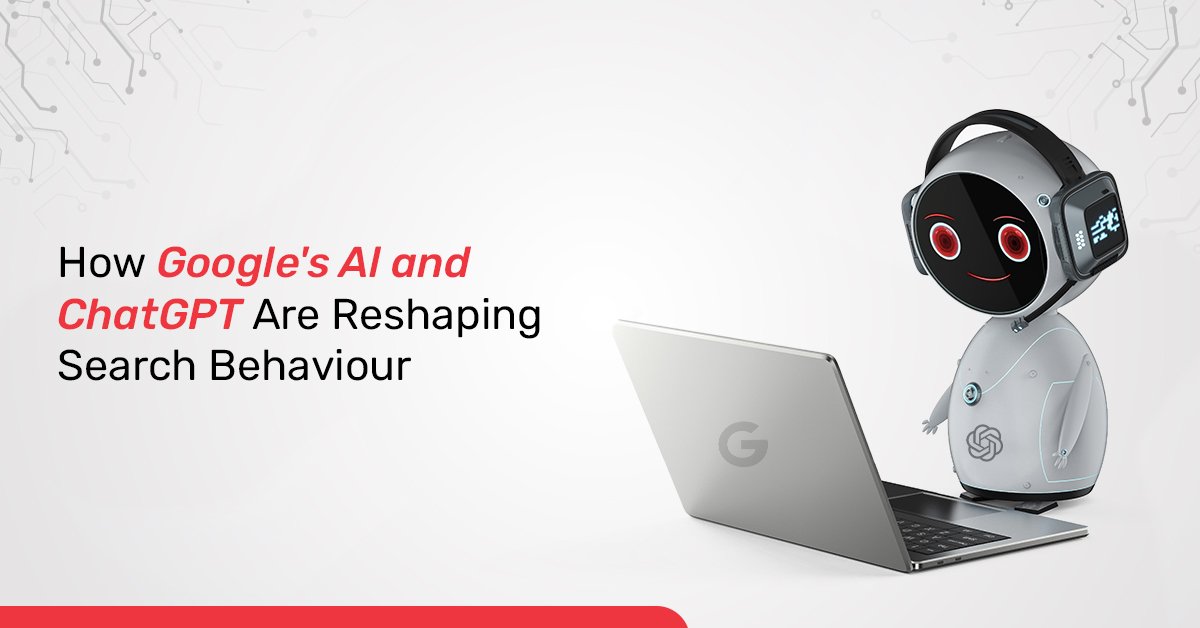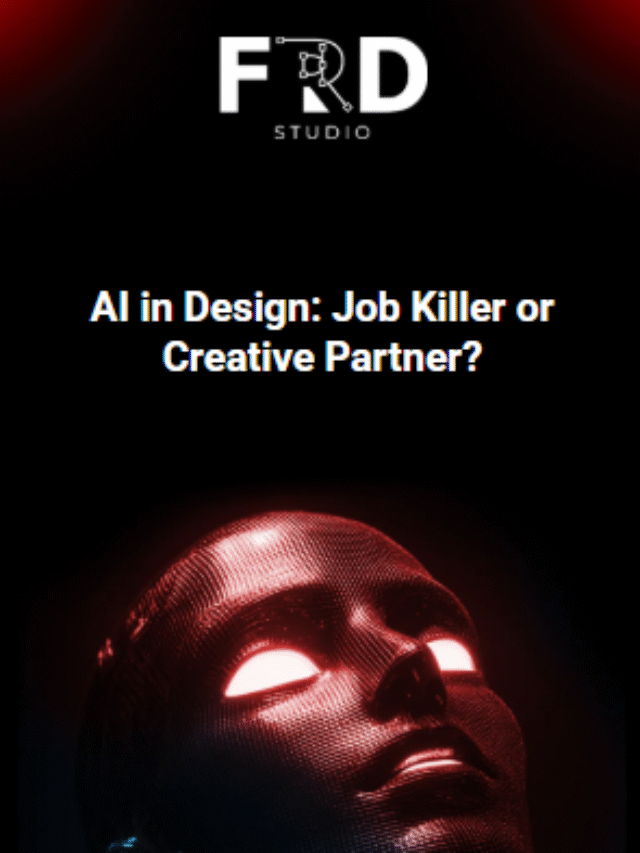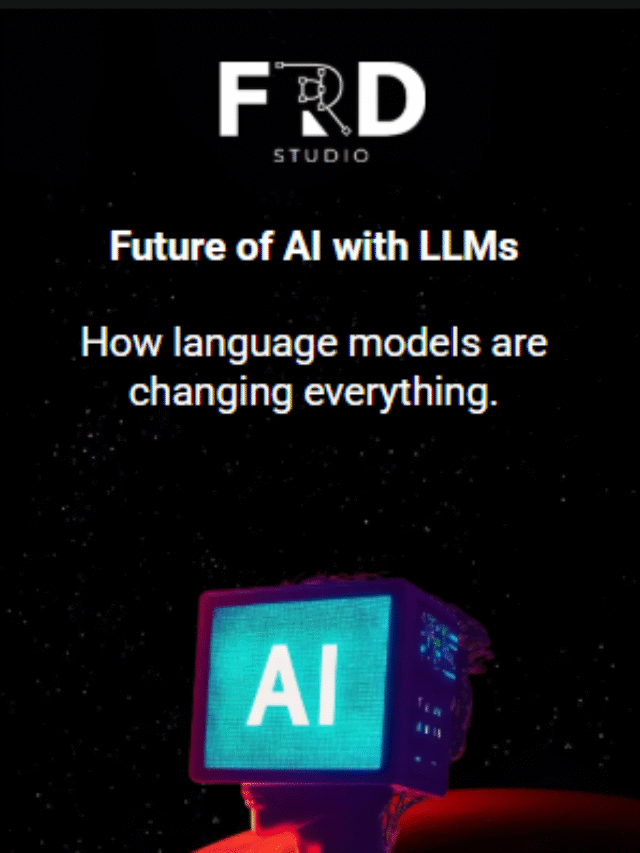AI and next-gen products like ChatGPT from OpenAI are fundamentally transforming internet search behaviour from keyword-focused searches to more contextual conversations. The shift from keyword searches to information-based searches not only changes searcher behaviour but also fundamentally alters the design and strategy employed in most websites, which makes it the top design agency in Gurugram.
The New Search Era
Today, AI is leading a fundamental shift in the world of web-based digital search behaviour. Internet users are beginning to rely on a more nuanced AI-powered search model to pinpoint their context-based queries, in addition to a traditional, keyword-driven model.
The potential implications for web design, SEO, and digital engagement are significant, and due to this shift, businesses and designers will need to reflect upon a more practical model of designing for both visibility and user experience in the age of AI-driven models.
AI is Changing Search Behaviour
AI tools such as Google’s Gemini and ChatGPT allow searchers to input questions naturally and complexly, receiving instantaneous, structured answers. Search behaviour has fundamentally shifted from transactional to interactive and discovering, where the net productive value is instant.
Let’s break down this simple text-based interaction:
– Users often submit whole questions instead of just search terms.
– Longer and more involved searches are growing in popularity, with ChatGPT questions generally averaging more than 20 words.
– Search sessions comprise image, voice, and even video input, expanding the definition of “search” to encompass many different modalities and experiences.
– Search result pages now often show the AI summary front-loaded with information to reduce the need for people to engage in multiple clicks, causing a radical shift in the user experience.
The Effects of ChatGPT and Conversational AI on Search
ChatGPT and other conversational AIs are changing search in various ways:
– Quickly providing the user with immediate answers, which continues to support zero-click searches for the user and keeps the user engaged without needing to scroll through pages of links.
– Responding in a much more contextually aware approach, including the ability to reference specific documents, images, and sections of the website.
– Becoming a primary source of information for many, especially for research, technical questions, or even shopping and product comparisons.
– Attracting a younger audience and offering entirely new forms of search intent, particularly regarding information-rich topics.
AI and Web Design: New Considerations
When it comes to web design, there are several considerations in the world of AI:
– Intent-Focused Content: AI models focus on finding pieces of content that closely mirror user intent and not just keywords. Every web page should aim to respond to certain questions, provide actionable value, and reflect expertise that enhances the design and development firm.
Personalised Experiences: With the benefit of AI tools, engaging users with the page (i.e., layout, recommendations, or visuals) in real time based either on their behaviour or preferences – or both – can provide a personalised experience to each individual user.
– Accessibility or Inclusion: AI will be able to assist in creating websites that are more accessible, particularly with web considerations and WCAG, ensuring all users have a more enjoyable digital experience.
– Constant Optimization: AI will constantly analyse the interactions users have with the website to make changes to design elements (like layout, and where content is placed) to drive engagement, and in the end, lower bounce rate.
How AI Is Impacting the Creative Design Process
AI is not just a back-end experience or a set of tools; it is now influencing the creative design aspect of web design:
Applications for design, such as DALL·E or Runway, can generate graphic designs or illustrations from quick written prompts or an entire layout based on design rules-creating even more unique data-based branding and design elements that enhance the graphic design agency in Gurugram.
– Designers are now working with AI to brainstorm more effectively, designing with available options more easily, and prototyping websites faster. Designers now possess an unparalleled ability to create, combine, and experiment with projects, making it an affordable design agency in Gurugram.
– AI is best suited for aiding inspiration for creative work, automating repetitive processes, and speeding up prototyping. As more and more time is opened up for human creativity,
SEO and Findability in the Age of AI
AI-powered searching is disrupting SEO strategies, leading to new and inventive approaches :
– Semantic Search Optimization: Since AI understands context when examining content, it is important to build related topic clusters as a way to be understood and ranked.
– Value and Expertise: It is essential to implement Google’s E-E-A-T strategy (Experience, Expertise, Authoritativeness, Trustworthiness). Content that reflects real-life experience and expertise demonstrates that expertise and authority are ranked more effectively, especially if an AI is summarising.
– Internal Linking and Topical Authority: Building intelligent internal links helps AI models locate the site of the content and understand the credibility of the information, to has the potential to be elevated to an answer box and summary.
– Content Freshness: AI rewards sites that regularly refresh content to stay current with the latest trends, research, or information as a means to be competitive in search results.
The Changing Nature of the Design Professional
The coming together of AI and design isn’t about replacement; it is about augmentation or empowerment:
– Human designers-augmented with AI-can focus on the strategic vision, narrative storytelling, and understanding human empathy while the AI handles repetitive, mundane work and real-time analysis of massive amounts of data.
– As a result, project timelines are shortened, end products remain on budget, and scaled quality and innovation abound.
– Personalisation engines, chatbots, and recommendation engines are the new Adobe/Photoshop tools for designers, as real-time engagement enables content based on behaviour.
Designing for Users’ Current Search Behaviours
The design of modern web pages is to be effective and refined, including the following:
– Create and anticipate users’ searches based on data patterns; algorithms driven by search engines and AI enable the analysis of user queries and behaviour. Referring back to the quote, people will search for things they want and how they want them, not based on how a designer sets the page up.
– Put people first: design accessible and clear user experiences, not a density of keywords, with understandable layouts and limited categories.
– Automate for continuous improvement: use methods to analyse A/B testing, categorise improvements into design implementations, and analyse heat maps.
Conclusion: Using AI for the Future
AI and ChatGPT are changing how we all learn to search, necessitating businesses to reconsider how they design for digital discovery. Being value-driven and people-first with your content, and employing intelligent automation to do less and adjust to new behaviours, will equip brands and designers to thrive in this new landscape.












